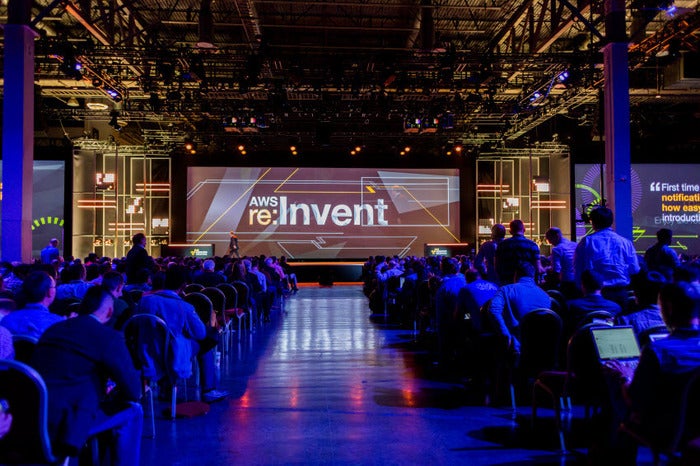Dell Latitude E6410 Notebook| Quantity Available: 40+
This post is intended for businesses and other organizations interested... Read more →
Posted by Richy George on 1 December, 2023

PostgreSQL 16, the latest major release of your favorite open source RDBMS, set new standards for database management, data replication, system monitoring, and performance optimization. Like clockwork, EnterpriseDB (EDB), a leading contributor to PostgreSQL code and leading provider of the Postgres database to enterprises, has unveiled its latest portfolio release for Postgres 16.1.
The milestone EDB Postgres 16 portolio release integrates the core advancements of PostgreSQL 16, reaffirming EDB’s dedication to the Postgres community and driving innovation in this technology. Let’s take a look at the key features added to the EDB Postgres 16 portolio release.
The new release boasts significant improvements in parallel processing and faster query execution, elevating Postgres’s status as a sophisticated open-source database. These enhancements are poised to benefit enterprises by facilitating more efficient data processing and quicker response times, crucial in today’s fast-paced business environments.
Security takes a front seat in EDB Postgres 16, with the introduction of flexible cryptographic key support and enhancements to Transparent Data Encryption (TDE), which has been updated to offer options for both AES-128 and AES-256 encryption. This allows customers to select AES-128 for scenarios where performance and energy efficiency are priorities, and AES-256 for instances where compliance with regulatory standards or achieving the highest level of security is essential.
The addition of privilege analysis further strengthens the database by adhering to the principle of least privilege, which involves tracing and documenting all active and inactive privileges assigned to a role. This approach allows customers to tighten their database security by methodically revoking unnecessary privileges, thereby preventing both deliberate and accidental data access or alterations. Additionally, this system facilitates the provision of comprehensive reports on database privileges for each role to auditors.
Acknowledging the challenges of migrating from Oracle databases, EDB has enhanced its Oracle compatibility features, prioritizing the most common incompatibilities found in EDB Migration Portal. The results led EDB To expand coverage in Oracle packages such as DBMS_SESSION, DBMS_SQL, and UTL_FILE. This additional coverage is a significant boon for organizations migrating from legacy systems while maintaining familiar workflows and minimizing disruption.
EDB also has introduced SPL Check, which aims to transform the developer experience for developers working with stored procedures. Instead of writing stored procedures and ensuring complete application suite testing to detect errors, SPL Check helps detect errors not found until runtime despite a successful CREATE PROCEDURE/FUNCTION command.
Additional features compatible with Oracle have been incorporated into the SQL MERGE command, aiming to minimize the discrepancies encountered during runtime between Oracle’s MERGE and PostgreSQL’s MERGE.
Lastly, the update also introduces new NLS Charset functions, namely NLS_CHARSET_ID, NLS_CHARSET_NAME, and NLS_CHARSET_DECL_LEN.
EDB Postgres 16 introduces sophisticated role membership controls, providing administrators with greater oversight of user activities. This update is crucial for managing complex enterprise databases, ensuring optimal performance even under high-intensity workloads. Additionally, enhanced visibility into table and index usage paves the way for more informed decision-making and efficient database management.
EDB’s latest offering is a testament to its enduring commitment to advancing Postgres. Improved scalability, enhanced security features, and better management tools make EDB Postgres 16 a premier choice for enterprises worldwide. This release not only underscores EDB’s innovation but also solidifies its role in addressing the dynamic needs of modern businesses.
Adam Wright is the senior product manager of core database, extensions, and backup/restore at EDB.
—
New Tech Forum provides a venue for technology leaders—including vendors and other outside contributors—to explore and discuss emerging enterprise technology in unprecedented depth and breadth. The selection is subjective, based on our pick of the technologies we believe to be important and of greatest interest to InfoWorld readers. InfoWorld does not accept marketing collateral for publication and reserves the right to edit all contributed content. Send all inquiries to doug_dineley@foundryco.com.
Next read this:
Posted by Richy George on 29 November, 2023

At its ongoing re:Invent 2023 conference, AWS unveiled several updates to its SageMaker, Bedrock and database services in order to boost its generative AI offerings.
Taking to the stage on Wednesday, AWS vice president of data and AI, Swami Sivasubramanian, unveiled updates to existing foundation models inside its generative AI application-building service, Amazon Bedrock.
The updated models added to Bedrock include Anthropic’s Claude 2.1 and Meta Llama 2 70B, both of which have been made generally available. Amazon also has added its proprietary Titan Text Lite and Titan Text Express foundation models to Bedrock.
In addition, the cloud services provider has added a model in preview, Amazon Titan Image Generator, to the AI app-building service.
The model, which can be used to rapidly generate and iterate images at low cost, can understand complex prompts and generate relevant images with accurate object composition and limited distortions, AWS said.
Enterprises can use the model in the Amazon Bedrock console either by submitting a natural language prompt to generate an image or by uploading an image for automatic editing, before configuring the dimensions and specifying the number of variations the model should generate.
The images generated by Titan have an invisible watermark to help reduce the spread of disinformation by providing a discreet mechanism to identify AI-generated images.
Foundation models that are currently available in Bedrock include large language models (LLMs) from the stables of AI21 Labs, Cohere Command, Meta, Anthropic, and Stability AI.
These models, with the exception of Anthropic’s Claude 2, can be fine-tuned inside Bedrock, the company said, adding that support for fine-tuning Claude 2 was expected to be released soon.
In order to help enterprises generate embeddings for training or prompting foundation models, AWS is also making its Amazon Titan Multimodal Embeddings generally available.
“The model converts images and short text into embeddings — numerical representations that allow the model to easily understand semantic meanings and relationships among data — which are stored in a customer’s vector database,” the company said in a statement.
Further, AWS has released a new feature within Bedrock that allows enterprises to evaluate, compare, and select the best foundational model for their use case and business needs.
Dubbed Model Evaluation on Amazon Bedrock and currently in preview, the feature is aimed at simplifying several tasks such as identifying benchmarks, setting up evaluation tools, and running assessments, the company said, adding that this saves time and cost.
“In the Amazon Bedrock console, enterprises choose the models they want to compare for a given task, such as question-answering or content summarization,” Sivasubramanian said, explaining that for automatic evaluations, enterprises select predefined evaluation criteria (e.g., accuracy, robustness, and toxicity) and upload their own testing data set or select from built-in, publicly available data sets.
For subjective criteria or nuanced content requiring sophisticated judgment, enterprises can set up human-based evaluation workflows — which leverage an enterprise’s in-house workforce — or use a managed workforce provided by AWS to evaluate model responses, Sivasubramanian said.
Other updates to Bedrock include Guardrails, currently in preview, targeted at helping enterprises adhere to responsible AI principles. AWS has also made Knowledge Bases and Amazon Agents for Bedrock generally available.
In order to help enterprises train and deploy large language models efficiently, AWS introduced two new offerings — SageMaker HyperPod and SageMaker Inference — within its Amazon SageMaker AI and machine learning service.
In contrast to the manual model training process — which is prone to delays, unnecessary expenditure and other complications — HyperPod removes the heavy lifting involved in building and optimizing machine learning infrastructure for training models, reducing training time by up to 40%, the company said.
The new offering is preconfigured with SageMaker’s distributed training libraries, designed to let users automatically split training workloads across thousands of accelerators, so workloads can be processed in parallel for improved model performance.
HyperPod, according to Sivasubramanian, also ensures customers can continue model training uninterrupted by periodically saving checkpoints.
SageMaker Inference, on the other hand, is targeted at helping enterprise reduce model deployment cost and decrease latency in model responses. In order to do so, Inference allows enterprises to deploy multiple models to the same cloud instance to better utilize the underlying accelerators.
“Enterprises can also control scaling policies for each model separately, making it easier to adapt to model usage patterns while optimizing infrastructure costs,” the company said, adding that SageMaker actively monitors instances that are processing inference requests and intelligently routes requests based on which instances are available.
AWS has also updated its low code machine learning platform targeted at business analysts, SageMaker Canvas.
Analysts can use natural language to prepare data inside Canvas in order to generate machine learning models, Sivasubramanian said. The no code platform supports LLMs from Anthropic, Cohere, and AI21 Labs.
SageMaker also now features the Model Evaluation capability, now called SageMaker Clarify, which can be accessed from within the SageMaker Studio.
Other generative AI-related updates include updated support for vector databases for Amazon Bedrock. These databases include Amazon Aurora and MongoDB. Other supported databases include Pinecone, Redis Enterprise Cloud, and Vector Engine for Amazon OpenSearch Serverless.
Next read this:
Posted by Richy George on 29 November, 2023

Continuing to build on its efforts toward zero-ETL for data warehousing services, AWS at its ongoing re:Invent 2023 conference, announced new Amazon RedShift integrations with Amazon Aurora PostgreSQL, Amazon DynamoDB, and Amazon RDS for MySQL.
Enterprises, typically, use extract, transform, load (ETL) to integrate data from multiple sources into a single consistent data store to be loaded into a data warehouse for analysis.
However, most data engineers claim that transforming data from disparate sources could be a difficult and time-consuming task as the process involves steps such as cleaning, filtering, reshaping, and summarizing the raw data.
Another issue is the added cost of maintaining teams that prepare data pipelines for running analytics, AWS said.
In contrast, the new zero-ETL integrations, according to the company, eliminate the need to perform ETL between Aurora PostgreSQL, DynamoDB, RDS for MySQL, and RedShift as transactional data in these databases can be replicated into RedShift almost immediately and is ready for running analysis.
Currently, all three integrations are in preview.
Last year, AWS announced two new capabilities—Amazon Aurora zero-ETL integration with Amazon Redshift and Amazon Redshift integration for Apache Spark.
In addition, the cloud services provider made the Amazon DynamoDB zero-ETL integration with Amazon OpenSearch Service generally available.
This integration will allow data professionals across enterprises to perform a search on their DynamoDB data by automatically replicating and transforming it without custom code or infrastructure, AWS said.
Amazon DynamoDB zero-ETL integration with Amazon OpenSearch Service can be availed across any AWS Region where OpenSearch Ingestion is available presently, AWS added.
Next read this:
Copyright 2015 - InnovatePC - All Rights Reserved
Site Design By Digital web avenue